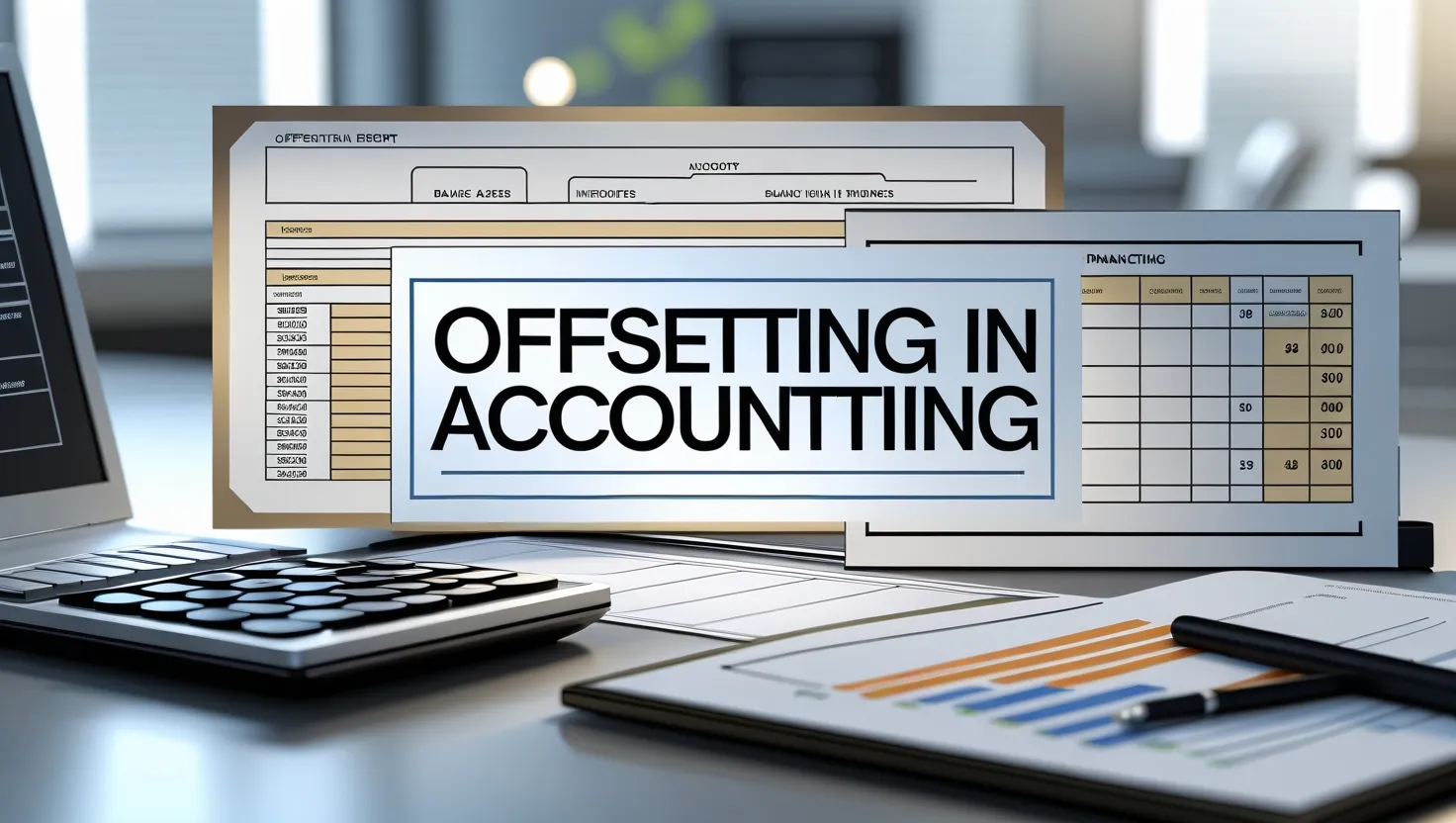
What is Offsetting in Accounting? #
Offsetting in accounting helps businesses balance their financial accounts. It means reducing one account, like money owed, by using another, like money received. This makes financial records clearer and easier to understand.
For small businesses, understanding offsetting is important. It helps track finances better, making sure records are accurate and easy to read. It also helps businesses follow legal accounting rules.
Why Small Businesses Should Care About Offsetting #
Small businesses face many financial challenges. Keeping financial records clean and clear is important for growth. Offsetting helps small business owners:
- Stay organized – Avoid messy and confusing financial records.
- Build trust – Investors and lenders like clear financial reports.
- Make better decisions – See the real financial position of the business.
- Save time and money – Reduce errors and simplify tax calculations.
By using offsetting, small businesses can run more smoothly and stay financially healthy.
Key Benefits of Offsetting #
How to Use Offsetting in Your Business #
Identify Transactions That Can Be Offset
First, check your financial records. Identify accounts that can be offset. These could include:
- Accounts receivable (money customers owe you)
- Accounts payable (money you owe to suppliers)
- Prepaid expenses
- Advance payments and refunds
Match Debits and Credits
For every debit (increase in expenses or loss of money), there is a credit (increase in income or decrease in expense). Offsetting makes sure debits and credits balance correctly.
Adjust Financial Entries
After identifying offsetting transactions, update the financial statements. This ensures that records reflect the actual financial situation.
Review Regularly
Businesses should check offsetting records frequently to avoid mistakes. Regular reviews ensure accuracy and compliance with legal accounting rules.
Use Accounting Software
Using accounting software can automate offsetting, reducing errors and saving time.
Challenges of Offsetting in Accounting #
- Complicated Records: Some businesses have financial records that are hard to track. Training employees or using accounting software can help manage complex records.
- Lack of Consistency: If offsetting is done differently each time, financial records can become confusing. Having standard processes ensures consistency.
- Limited Resources: Small businesses may not have enough staff to handle accounting tasks. Using automated tools or hiring an accountant can help.
- Not Keeping Up with Rules: Accounting standards change from time to time. Businesses should stay updated on rules to avoid legal problems.
- Technological Barriers: Some businesses may find it hard to switch to digital accounting tools. However, using simple and user-friendly software can ease the transition.
Best Ways to Handle Offsetting #
- Train Employees Regularly – The Accounting staff should be trained to handle offsetting correctly. Regular training keeps everyone updated.
- Use Digital Accounting Tools – Technology can automate offsetting, reducing errors and saving time for small businesses.
- Conduct Internal Audits – Regular audits ensure financial records are correct. Spotting issues early helps prevent bigger financial problems.
- Follow Standard Procedures – Creating a clear offsetting process helps businesses stay consistent and organized.
- Consult with Financial Experts – For complex financial situations, consulting with an accountant or financial expert is a good idea.
- Keep Detailed Records – Good record-keeping makes financial audits easier. Businesses should document how they apply offsets and why.
How Vyapar App Helps #
- Automates Offsetting Processes: Vyapar app’s automated system saves time and reduces errors by handling complex calculations.
- Ensures Compliance with Accounting Rules: It follows standard accounting rules, helping businesses meet legal requirements.
- Easy-to-Use Interface: Even business owners with little accounting experience can use the Vyapar App easily.
- Provides Clear Financial Reports: Detailed reports help businesses track financial changes caused by offsetting.
FAQ’s: #
What does offsetting mean in accounting?
Offsetting is when a business reduces one financial account by using another, such as balancing accounts payable with accounts receivable.
Why is offsetting important for small businesses?
It helps keep financial records organized, reduces errors, simplifies tax calculations, and improves cash flow management.
Can all transactions be offset?
No, only certain transactions, such as accounts payable vs. accounts receivable or advance payments vs. expenses, can be offset according to accounting rules.
How does offsetting help with taxes?
It simplifies tax reporting by focusing on net amounts, reducing errors, and making tax filing easier.
Do businesses need special software for offsetting?
While not required, accounting software helps automate offsetting, reducing errors and saving time.
Conclusion #
Offsetting in accounting helps businesses maintain clear financial records, improve cash flow, and ensure compliance with accounting regulations. By implementing offsetting correctly, small businesses can reduce errors, simplify tax reporting, and make better financial decisions. Regular reviews and the use of accounting software can further streamline the process, ensuring financial health and stability.
Use Vyapar App to handle billing, stock & payments all in one place.
Make bills, track stock, and handle payments in one place.
